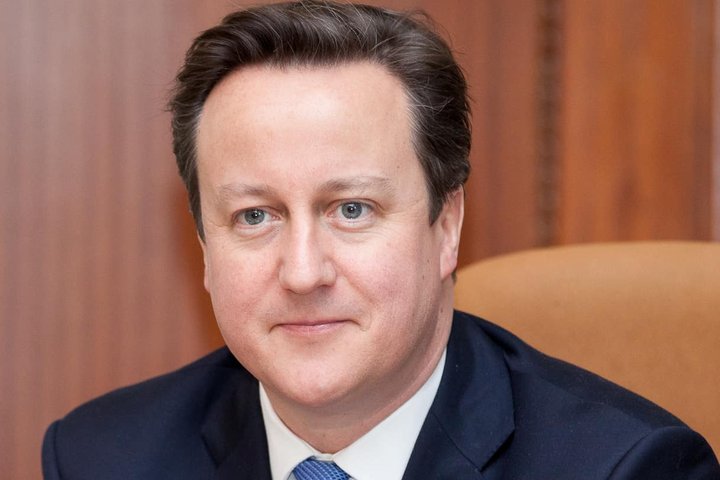Cameron’s Triumphant Performance
The UK enthusiastically welcomed the American-style televised leader’s debates with seven-million of us tuning in to see the seven major contenders represented on stage. Some thought that the presence of women added a human, authentic, touch - perhaps even a ‘moral’ element. Others felt it was tokenism for the smaller parties and merely done to increase the quota of women on stage. Either way, the strongest performers in that seven-way debate, Sturgeon and Cameron, both having physical and vocal presence, came out winners post-ballot. Our previous post looked at Nicola Sturgeon, here we look at Cameron’s performance in the final debate.
Looking back at Milliband’s performance now, his awkward stance and inability to show up as truly genuine was an early warning sign for labour. It reveals, perhaps, a deep lack of self-belief and clarity of purpose - a rocky foundation for a party who’s campaign has been a struggle. Interesting how these behaviours reflect an inherent lack of clear agenda for social change - and thus an unsuccessful challenge to a Tory majority. Clegg played the nice guy, and his message was one of quiet resignation; there was little fire in his belly and little to differentiate him from Cameron. It's no surprise to see them both resign before midday.
Cameron
- Cameron provided energy. From an energetic run up the stairs to a confident exit Cameron looked and sounded every inch the leader.
- His stance was powerful and confident - feet a hip width apart, weight balanced evenly on both legs.
- He moved forward to engage with the audience when answering questions but did not stray outside the circular podium, respecting the boundary.
- His eye contact was direct, clear and warm throughout.
- His voice was clear, strong and fluent: commanding in tone, yet respectful of his questioners.
- His pace was easy to follow without ever seeming hesitant and he seamlessly segued from answering a question to speaking on other policies he wished to include.
- He spoke in short sentences and used brief pauses to punctuate the meaning
- Cameron used lots of chunking gestures (parallel palms), the one-handed chop, and a lot of the Clinton thumb. (Most politicians use palm down or palms parallel gestures to give them credibility and authority and to deepen their vocal pitch giving them more gravitas. Palm down gestures also help them to beat down on the word they wish to emphasise.)
- He was passionate without being emotional: dynamic and comfortable in his own skin.
Milliband
- Looked nervous, uncomfortable and stressed right from the beginning.
- He arrived on stage left hand in pocket, re-arranged himself and shot a nervous look at the audience. No smile - just a very blank face.
- Perhaps his advisors told him to look less stiff, but by slumping into the lecturn in the ITV debate he appeared patronizing, and standing with his right hand in his pocket for made him look as if he was trying to comfort himself or contain himself.
- When answering questions Milliband moved right up to the audience so then had to walk back to the podium.
- Milliband gave away his power unnecessarily and planted negative thoughts in people’s heads: ‘I guess I’m not going to convince you (nervous laugh).’
- He did bring his chin down to a neutral position which helped lower the pitch of his voice and make it sound less tight and strained.
- He used less of his trademark high held, right-handed ‘pincer’ gesture. He used a lot of the Clinton thumb but there are no inclusive open palm gestures which would help him to appear friendlier and more approachable.
- Eye contact ranged from fleeting to frightened or staring.
Clegg
- He picked up a glass of water as soon as he appeared on stage which served to draw attention to his nervousness.
- He appeared likeable as he smiled readily and his open face tends to make us trust him and this is enhanced by the fact that his eye contact is direct and friendly.
- Clegg is vocally confident, credible as well as friendly when appropriate. He used more vocal variety in his pitch, pace and tone to engage us than the other two leaders.
- His stance is usually powerful sending a confident message - feet a hip width apart, weight balanced evenly on both legs.
- Much of Cameron’s non-verbal body language applies to Clegg. But of all the leaders he was the only one whose gesture moved into a wider plane and the only one who confidently used any inclusive gesture.
- Like Cameron he moved forward to engage with the audience when answering questions and did not stray outside the circular podium.
RADA offers a Foundation Suite of four short courses looking at key practical areas to improve communication and presentation skills.
Foundation Suite
- Physical Presence
- Vocal Presence
- First Impressions
- Skills for Networking
Notes
RADA, the Royal Academy of Dramatic Art, has been a leading name for over a century in the field of performance. RADA Business draws on the lessons taught by one of the world’s leading drama schools, delivering tailored communication-based courses to business at all levels from KPMG to Channel 4. Our tutors have coached some of the leading business people to help them connect with their audience.
Sheelagh McNamara, a voice, speech & presentation skills expert, who has worked with everyone from Oscar nominees to politicians to lawyers, is a RADA Business tutor – taking the dramatic training skills to the business world. She is the course leader on our Executive Presence for Women course.

